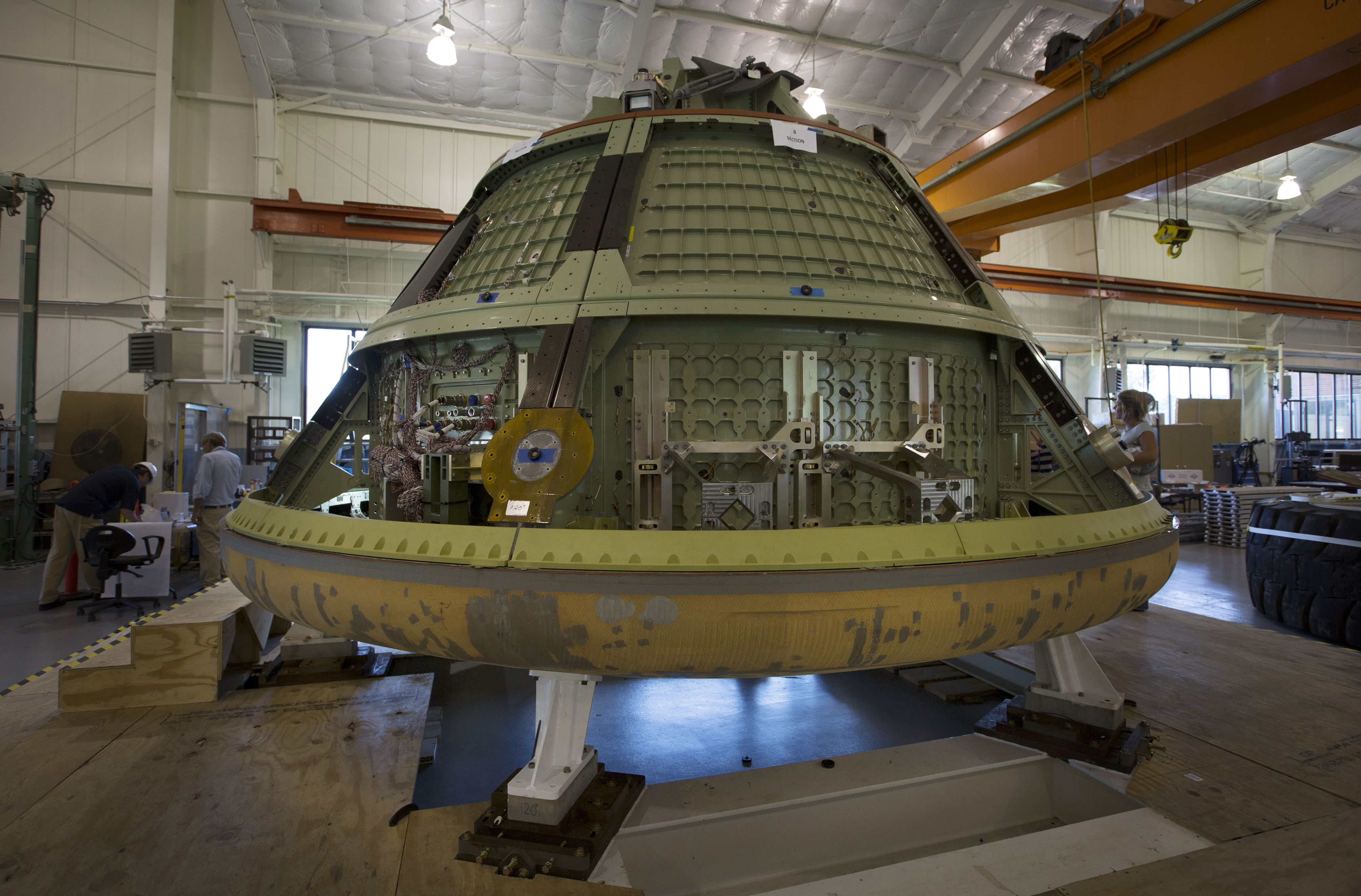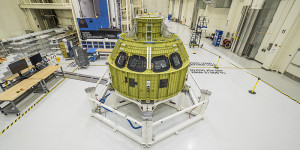NASA’s Orion Multi-Purpose Crew Vehicle (MPCV) is a spacecraft planned to take astronauts farther than any human has ever gone before. The agency launched the spacecraft on its first test flight in December 2014, and NASA hopes to launch Orion on a crewed mission beyond low Earth orbit in 2021.
Although somewhat similar to the Apollo spacecraft in shape and appearance, Orion is larger and can fit up to six crew members at once, compared to Apollo’s three. In addition, a new version of the Apollo heat shield will keep the astronauts safe as the crew module re-enters Earth’s atmosphere when it returns from deep space.
“It’s being built for multiple destinations,” explains Lara Kearney, Deputy Manager of the Orion Crew and Service Module. “We want it to be flexible in its ability to go different places, whether it be just beyond the lunar orbit or to an asteroid.”
Orion is being developed simultaneously with NASA’s Space Launch System (SLS), a heavy-lift rocket, which will be capable of sending humans to deep space destinations and eventually Mars.
The first mission to integrate Orion and the SLS, Exploration Mission-1 (EM-1), will take place in the fall of 2018. The Orion spacecraft will travel thousands of miles beyond the moon over the course of about a three-week mission.


